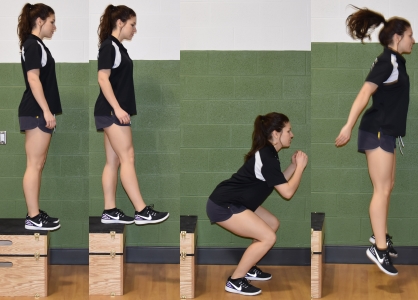This course focuses on post injury prevention and reconditioning exercises for clients that have had or are at risk of having an athletic (sports) related injury. Functional anatomy, postural evaluation and muscle imbalances will be used to develop exercise strategies for common sports related injuries.
Target population:
- Course Instructor: Tim Rush
- Lab Technician:
- Semester: Four
Lab Sections:
- Section 1:
- Section 2:
- Section 3:
- Section 4:
Lab Schedule
| Course: PHRE 5003 - High Performance Training | Movement Pattern: Lower Body | Target: Quadriceps | Synergist(s): Gastrocnemius, Gluteals, Hamstrings |
| Exercise |  | ||
| Regressions: | Progressions: | ||
| Key Teaching Points | Expectation: [if 456 equals="Supervised Practice"]Supervised Practice [/if 456][if 456 not_equal="Supervised Practice"]Independent Learning[/if 456] | [579] | |
|---|---|---|---|
| Description: | The depth jump is a plyometric movement designed to improve explosive power, therefore reps should be limited to 6 or fewer. Start with a plyometric box between 12-42" high. N.B. The higher the box, the greater the stress experienced.
Variation
| ||
| Common Error(s): | Valgus knees | ||
| Spotting: | |||
